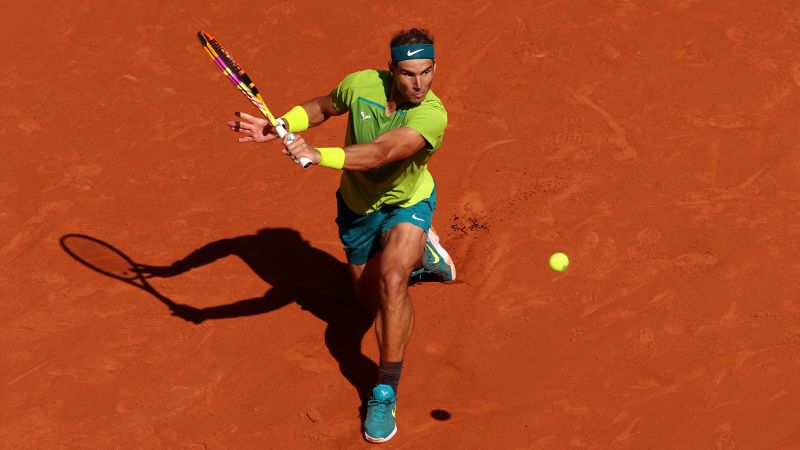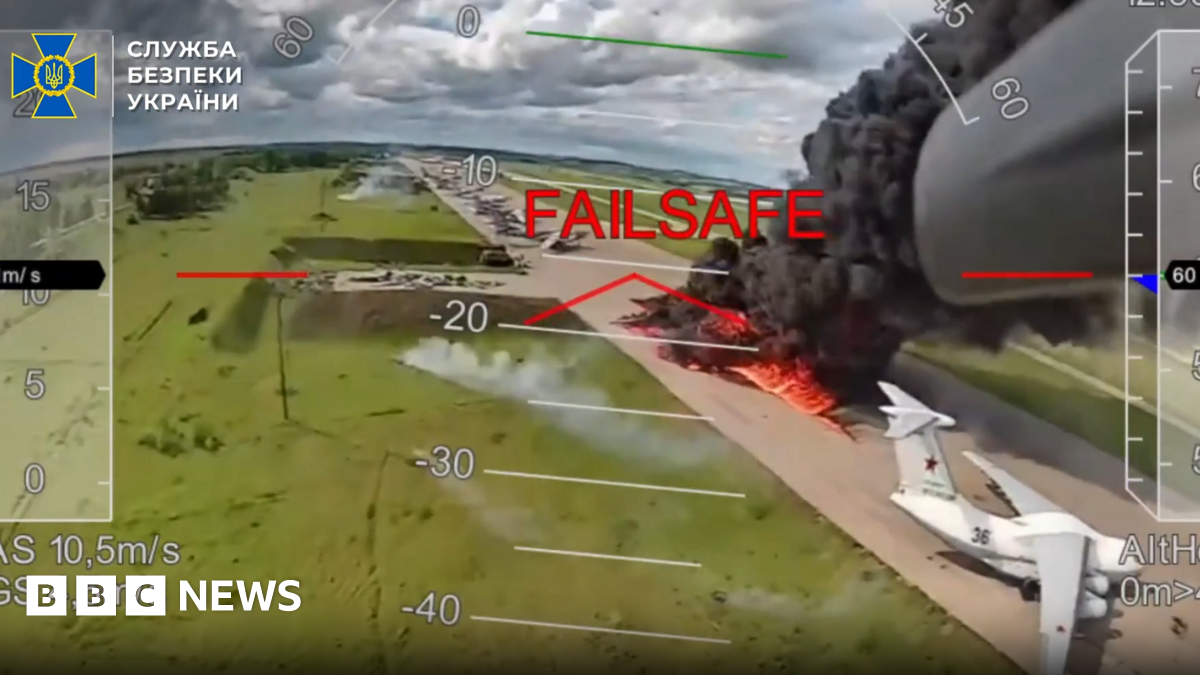Why Clay Is Tennis' Toughest Surface: A Roland Garros Perspective

Welcome to your ultimate source for breaking news, trending updates, and in-depth stories from around the world. Whether it's politics, technology, entertainment, sports, or lifestyle, we bring you real-time updates that keep you informed and ahead of the curve.
Our team works tirelessly to ensure you never miss a moment. From the latest developments in global events to the most talked-about topics on social media, our news platform is designed to deliver accurate and timely information, all in one place.
Stay in the know and join thousands of readers who trust us for reliable, up-to-date content. Explore our expertly curated articles and dive deeper into the stories that matter to you. Visit Best Website now and be part of the conversation. Don't miss out on the headlines that shape our world!
Table of Contents
Why Clay is Tennis' Toughest Surface: A Roland Garros Perspective
The French Open, also known as Roland Garros, stands as a unique test in the world of professional tennis. Unlike the faster surfaces of Wimbledon's grass or the hard courts of the US Open and Australian Open, Roland Garros's clay courts present a uniquely grueling challenge, demanding a different skill set and physicality from even the most elite players. But why is clay considered tennis' toughest surface? Let's delve into the intricacies of this challenging terrain, viewed through the lens of the prestigious Roland Garros tournament.
The Physics of Clay: Slowing Down the Game
The high friction of clay significantly slows down the ball's speed, leading to longer rallies and more strategic play. This is in stark contrast to the fast-paced action seen on hard courts or grass. The slower pace necessitates more precision in shot placement and a higher degree of stamina. Players aren't just hitting winners; they're meticulously building points, testing their opponents' endurance and mental fortitude.
Demanding Physicality: A Marathon, Not a Sprint
Clay courts demand more from a player's body. The high friction requires more lateral movement, leading to increased strain on joints, muscles, and tendons. Players spend more time sliding, requiring excellent agility and footwork, significantly increasing the risk of injury. This physical exertion is a key reason why Roland Garros is often considered the most physically demanding Grand Slam tournament. Think of it as a marathon, not a sprint – a true test of endurance.
Tactical Nuances: Mastering the Slide and the Spin
Clay court tennis introduces a whole new level of tactical complexity. The slide, a crucial technique for covering the court effectively, requires precise timing and balance. Players must master the art of sliding without losing control, maintaining their balance while generating power. Furthermore, the high friction allows for greater spin on the ball, adding another layer of difficulty and strategy. Topspin becomes crucial, as it helps the ball bounce higher and deeper into the court, making it more challenging for opponents to return.
Mental Toughness: The Crucible of Clay
Beyond the physical demands, clay courts also test a player's mental resilience. The longer rallies and the increased chances of errors can lead to frustration and mental fatigue. The ability to maintain focus and concentration throughout lengthy matches is critical for success on clay. Roland Garros often witnesses epic battles, where mental strength becomes as important as physical prowess. The pressure mounts with each point, making the mental game as important as the physical.
Roland Garros: The Ultimate Clay Court Test
The French Open, with its unique red clay surface, showcases the true challenge of clay court tennis. The tournament's history is replete with legendary battles, where players have pushed their physical and mental limits to achieve victory. It's a testament to the demanding nature of clay, a surface that rewards tactical brilliance, impeccable fitness, and unwavering mental strength.
Conclusion: More Than Just a Surface
Clay is more than just a surface; it's a test. It's a crucible that refines the skills and resilience of tennis players, separating the truly great from the merely good. Understanding the unique challenges of clay, as demonstrated at Roland Garros, gives us a deeper appreciation for the athleticism and skill required to conquer this demanding terrain. So next time you watch a match on clay, remember the demanding physics, the grueling physicality, and the vital mental strength it requires. It’s a reminder of why clay truly reigns supreme as the toughest surface in tennis.

Thank you for visiting our website, your trusted source for the latest updates and in-depth coverage on Why Clay Is Tennis' Toughest Surface: A Roland Garros Perspective. We're committed to keeping you informed with timely and accurate information to meet your curiosity and needs.
If you have any questions, suggestions, or feedback, we'd love to hear from you. Your insights are valuable to us and help us improve to serve you better. Feel free to reach out through our contact page.
Don't forget to bookmark our website and check back regularly for the latest headlines and trending topics. See you next time, and thank you for being part of our growing community!
Featured Posts
-
 Father Of Three Dead Girls Sought By Washington State Police
Jun 06, 2025
Father Of Three Dead Girls Sought By Washington State Police
Jun 06, 2025 -
 Assessing The Impact Were Ukraines Surprise Airfield Attacks A Turning Point
Jun 06, 2025
Assessing The Impact Were Ukraines Surprise Airfield Attacks A Turning Point
Jun 06, 2025 -
 Kidnapped By A Killer Steve Guttenberg Talks New Movie Role
Jun 06, 2025
Kidnapped By A Killer Steve Guttenberg Talks New Movie Role
Jun 06, 2025 -
 Understanding Trumps Travel Restrictions Which 12 Countries Were Targeted
Jun 06, 2025
Understanding Trumps Travel Restrictions Which 12 Countries Were Targeted
Jun 06, 2025 -
 Marcus Monzos Alleged Plan To Kill Daniel Anjorin Key Testimony In Murder Case
Jun 06, 2025
Marcus Monzos Alleged Plan To Kill Daniel Anjorin Key Testimony In Murder Case
Jun 06, 2025
Latest Posts
-
 Preventing Hospitalization The Role Of Early Life Gut Microbiome Development
Jun 07, 2025
Preventing Hospitalization The Role Of Early Life Gut Microbiome Development
Jun 07, 2025 -
 Milwaukee Maxwell Anderson Trial Ends Jury Reaches Verdict
Jun 07, 2025
Milwaukee Maxwell Anderson Trial Ends Jury Reaches Verdict
Jun 07, 2025 -
 Exclusive Interview Steve Guttenberg On His New Lifetime Movie
Jun 07, 2025
Exclusive Interview Steve Guttenberg On His New Lifetime Movie
Jun 07, 2025 -
 Gaza Operation Israeli American Hostages Remains Retrieved
Jun 07, 2025
Gaza Operation Israeli American Hostages Remains Retrieved
Jun 07, 2025 -
 Applied Digital Stock Jumps 48 On Record Breaking Core Weave Agreement
Jun 07, 2025
Applied Digital Stock Jumps 48 On Record Breaking Core Weave Agreement
Jun 07, 2025
